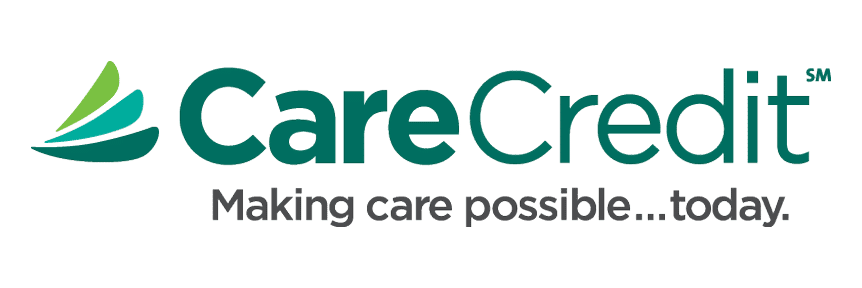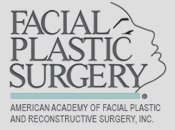Posted February 07, 2008 in Accent XL (Fat Sculpting, Skin Tightening), Blog, Eyelid Lift, Rhinoplasty, Sculptra, Uncategorized
Fat is the hot topic at the plastic and cosmetic surgery meetings around the world. Who among us can’t find a little (or big for that matter) area of “pudding” that we’d rather have off of our body than remaining attched to it? I have just returned from the epicenter of plastic surgery in the universe, Newport Beach, California. It seems that moving fat around the body is the way to stay slim, trim, and youthful in appearance. The technologies bursting onto the scene and to be discussed here will include facial liposculpture ,Ultrashape ™, Liposonix™, Ssmartlipo™, Tthermage™ , Velasmooth™, Triactive™, AccentXL™, Titan™, Medsculpt™ ,Lipodissolve ™,and Lipozap ™.
As we age, we lose volume from our faces. Val Lambros, MD of Laguna Beach, California has presented amazing computer imaging progressions that demonstrates the aging face when pictures from youth and from old age of a person are compared. He graphically displays how significant the deflation of the face is as it ages The analogy that best describes the loss of volume with aging from the face is how a grape loses volume when it becomes a raisin. The once youthful, firm, smooth, voluptuous grape deflates to a wrinkled, sad, old looking raisin. So how would you go about making that raisin look like it’s old former youthful grape-self again? Well it could undergo a “facelift” to pull and cut away the wrinkles, in which case our raisin could look like a smooth little young pea, instead of the proud grape that it once was. But a pea isn’t a grape. Apply that reasoning to human faces, and you now understand why many of the “mature” faces seen shopping on Rodeo Drive in Beverly Hills look “funny”. Surgeons have taken that wrinkled, volume depleted face, and pulled and cut the wrinkles out. Those faces no longer have the sagging, wrinkled signs of aging, having traded them in for an unnatural pulled, skeletonized, and wind-tunnel blown appearance of “bad plastic surgery”. Like our friend the raisin, they look like a little pea instead of like their former self. Getting back to how to restore the raisin or aged face to it’s former self, add volume. Inject the raisin with fluid, and it will reinflate to look like a grape again. Inject the face with volume and it will regain a more youthful, natural appearance. That is why fillers such as Restylane, Radiesse, Juviderm, and Sculptra are so popular. The most natural and lasting filler of volume is our own fat.
Fat is the only filler that is alive. The argument against using fat transfer in the past has been, “Fat grafting doesn’t work, it all goes away”. When done improperly, fat does go away and doesn’t last. When performed meticulously, thoughtfully, and with a true artistic aesthetic sense, fat lasts and patients benefit from natural permanent filler. Additionally there is documented improvement in the character and texture of the skin over which fat is placed. Over a period of years, scars are seen to disappear in some patients. It is thought that the fat cells have “stem cell” potential, and that these stem cells help to rejuvenate the overlying skin.
How do we know that fat lasts? Sidney Coleman, MD in New York City has one of the longest active practices in liposculpture in the world. Some of his patients are twenty-five years out from their procedures with maintained results. Walton Montegut, MD who trained and worked with Dr. Coleman before establishing his practice in the OC has incredible long term results. Unfortunately there have been plenty of surgeons who have attempted to perform fat transfer procedures, but have performed them improperly. If a large “glob” of fat is forced into the lips or face and left to heal, that surgeon and patient have a life-long problem. You can find many of these permanent fat results on the plastic surgery disaster websites. There is many a surgeon who has hoped that their “mistake” of too much fat would go away, only to find that it lasts for years. These complications of poorly performed fat transfers need surgical correction.
Again, when performed properly, fat liposculpture truly restores a natural, rested, and amazingly youthful appearance to our aging faces. It raises the upper eyelids, fills the hollows beneath eyes camouflaging the “bags” and improving dark circles. It restores high cheek bones which in turn softens the nasolabial grooves and folds (the area from the corner of the nose to the corner of the mouth between the cheek and upper lip). The lips benefit from fullness and elegance. The jowls are softened by filling along the jaw line in front of them. The entire jaw line can be made to look youthful. It’s no wonder that fat liposculpture is becoming more and more popular, but my caveat is to choose your surgeon most carefully. Many experienced liposculpture surgeons consider the procedure one of the most aesthetically demanding procedures. I agree, but rhinoplasty remains the most demanding in my practice.
Now let’s talk about the less invasive technologies of moving fat from where we don’t want it. The most exciting new prospect that I have heard about is Ultrashape™. Ultrashape is the first fat “melting device coming to the marketplace. It is pending FDA approval. Ultrashape uses a pulsed, focused ultra-sonic energy to cause lipolysis (the actual breakdown of fat cells). The broken down fat cells are then absorbed by our body’s natural physiologic mechanisms. The breakdown products are filtered through the lymphatic and blood systems to the liver and kidneys to be excreted in urine and poop, similar to the food that we eat. Actual histologic disruption of fat cells is seen under the microscope. Ultrashape runs on a computer system that actually “locks” onto the targeted fat area and then fires, similar to the technology that allows fighter pilots to lock onto their target. The neck and areas over bone cannot be treated because of the possibility of fat necrosis (too much fat loss). Ultrashape has over 250 installed sites around the world, and there have been over 30,000 treatments without any noted damage to the liver or kidneys. In U.S. trials, 164 patients have reported from 2cm to 4cm reduction in their waists. It is not currently available in the U.S. Worldwide there has been extremely high patient satisfaction. With multiple treatments there is improved results. It is not a replacement for surgical liposuction, but seems to be a great alternative, and/or adjunct to liposuction.
Liposonix™, a Seattle based medical device company is another ultrasound lipolysis technology that is being developed and undergoing trials. Liposonix uses ultrasound energy and heat to coagulate fat cells. Liposonix is not as close as Ultrashape to being “as seen on Oprah”.
Smartlipo™ is a laser assisted sculpting of fat that requires a small incision followed by using a fiber laser to heat the fat while it is being sugically suctioned. There is less bleeding, swelling and downtime with this treatment, but again it is not as effective as true surgical liposuction.
Thermage™ uses radiofrequency energy to attempt to tighten the skin and fat, but despite being used for many years now, the patient satisfaction rate remains extremely low for me to incorporate this technology into my practice. Thermage treatments can be quite painful for patients.
Titan™ is another RF based technology that may or may not be effective for individual patients. It too can be quite painful. Triactive™ has not received favorable reviews at the most recent meeting that I attended; one of the lecturers stating, “Triactive didn’t work on my patients”.
Cellulite treatment devices include Velasmooth™, Accent XL™, Medsculpt™, and Triactive™. Velasmooth™ is proven to show improvement in cellulite while the patient is actively receiving treatments. The problem is that it is necessary to continue treatments indefinitely or else the benefits of the treatment disappear, and the dreaded cellulite returns. Alma laser has a device called Accent XL™ that has the potential for tightening areas of unwanted fullness. Antedotically (speaking to two physicians and one nurse at different meetings) I have heard that there is some success, but that it takes a lot of physical work with the machine, and/or with vigorous massage after the treatment to get good results. A third respected physician was unable to reproduce the results shown by the company’s before and after pictures. Accent XL is similar to Thermage, but not painful. In fact it is so similar that there are some of our finest attorneys involved in patent infringement suits. The nurse who gets great results with the technology gives a very deep and vigorous massage of the treated area immediately following the treatment with Accent XL.
Medsculpt™ is a ultrasonic massage that shows improvement in the waist, love handles, and thighs with multiple (2-3 times per week) treatments. When mesotherapy type injections are added to the mix, we have Lipodissolve™, or Lipozap™. The injections of phosphatylcholine and deoxycholate add to the fat dissolving and relocating effect. With all of these treatments patients lose “inches”, but not weight. Sometimes the fat may “relocate” to another part of the body (e.g. the back). Mesotherapy treatments are considered controversial. Medical and surgical specialty boards advise doctors to avoid conducting these procedures. The American Society for Aesthetic Plastic Surgery (ASAPS) has released a warning against the use of these injection fat destroying treatments. Although they are marketed as fat-loss treatments, they have not been scientifically proven to reduce fat, and they lack objective data on safety and efficacy. More importantly, the injection formulations have not yet received FDA approval.
Lastly, in experiments on mice at Georgetown University, researcher Zofia Zukowska has found the exact biological pathway by which the body adds fat to specific portions of the body. A chemical messenger called NPY increases the number and size of fat cells, while growing new blood supply to feed them. Injections of NPY could increase fat growth spots so that we may one day be able to add volume to the face or breasts with these simple injections. More interesting is that by injecting a substance into fatty tissue that blocks or inhibits NPY, fat deposits were shrunk up to 50 percent in just two weeks. “It just melts the fat,” Zukowska told The Washington Post. If it works on humans it could make liposuction, breast reduction, and dieting obsolete. Human experiments could begin within two years.
As with all medical devices and treatments, many times it’s “the driver and not the car that wins the race”. In other words, practicioners may have their own techniques of improving results with any given technology. My job when evaluating technology and devices is safety first and then consistent effectiveness and long term patient satisfaction. Unfortunately, the ethics of many laser companies, “med-spas”, and practicioners are driven by the financial bottom line. This exposes the public to techniques and devices that are not always in the best interest of patients. I will continue to investigate these technologies and will get back with you when my due diligence has been served. In the meantime remember that nothing beats taking care of yourself. All of these technologies will give you better results if you pay attention to a proper diet and get plenty of proper exercise and fresh air. As for me, I worked out this morning so I’m going to have a fudge brownie.
Need Advice? Call 818-570-0958 | Book an appointment




